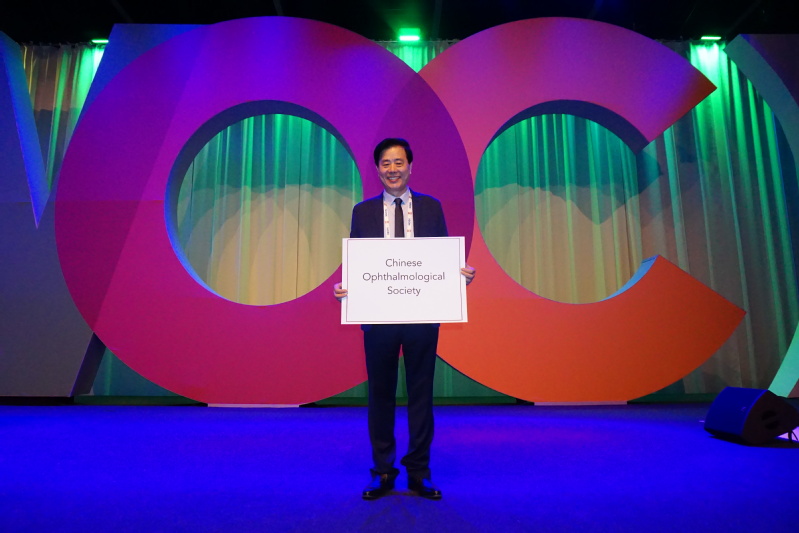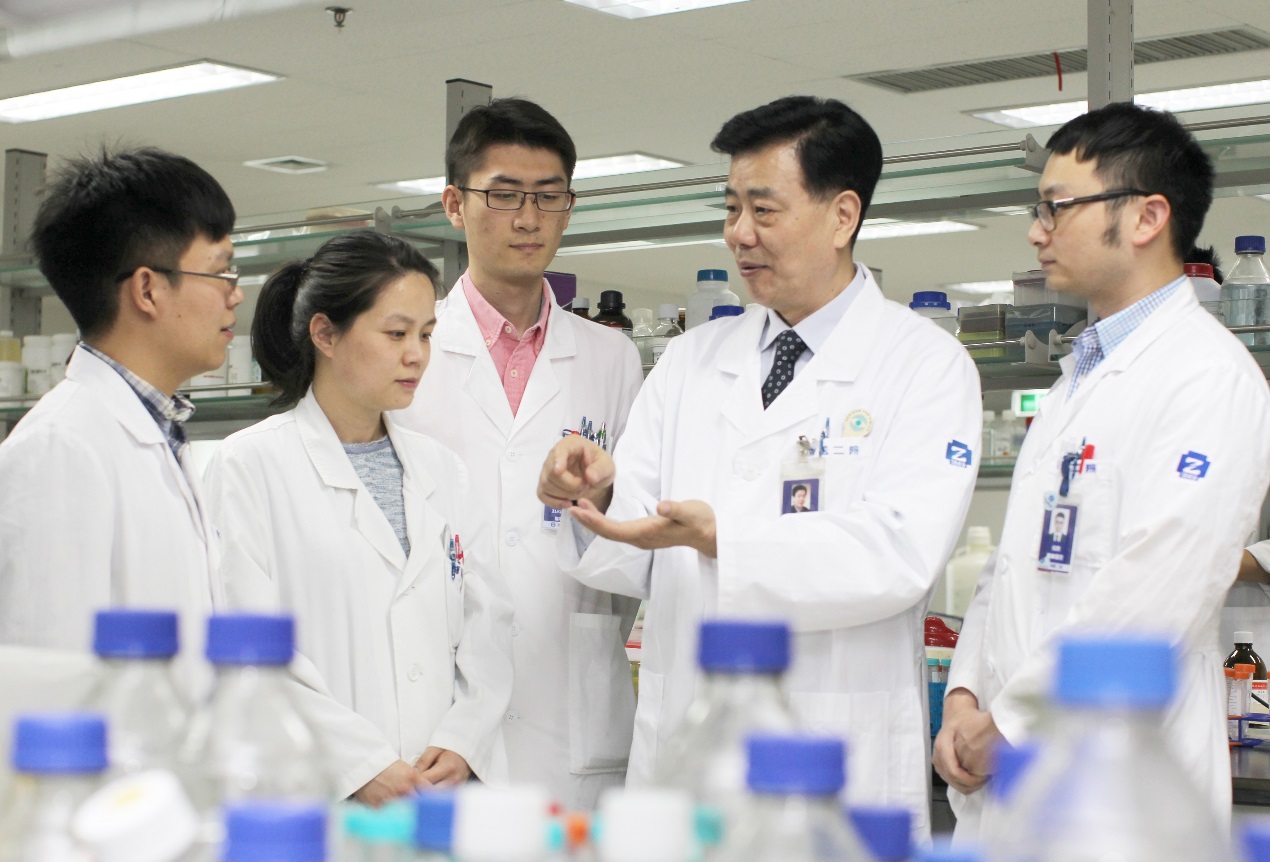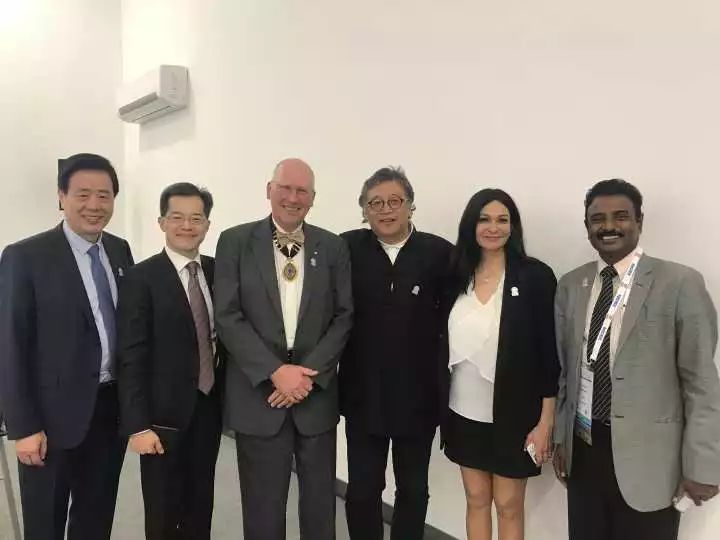YAO Ke: Keeping his eyes on the real prize
FEATURE STORY
For leading ophthalmologist YAO Ke, accolades are flattering but the greatest reward is found in scientific progress and improving people's lives...
On June 16, exciting news arrived from Spain.
During the 36th World Ophthalmology Congress, the President of the Chinese Ophthalmological Society, a specialty society of the Chinese Medical Association, Prof. YAO Ke, from the Eye Center of the Second Affiliated Hospital of ZJU School of Medicine became a member of the Academia Ophthalmologica Internationalis (AOI), voted in by a large margin.

With only 80 seats available to 240,000 ophthalmologists, a rigorous selection process determines who joins the AOI, the highest honor in ophthalmology.
Only when a seat becomes vacant can selection occur.
Nominees are not widely advertized. At 7:30 a.m. June 16, after the 52 attending members were seated, the list was announced: 3 out of 11.
No lobbying occurred in advance. Voting was not open to the public. The nominator reported and explained the recommendation within three minutes. Afterwards, voting occurred immediately. To be elected required over 60% of the vote.
YAO seemed a likely winner. With 364 academic papers, he led all candidates. He had completed over 40,000 surgeries, the largest number of all contenders. With regards to lens induced by stem cells and femtosecond laser-assisted cataract surgeries, YAO's results were exceptional. Finally, YAO had created China's first automotive ophthalmic mobile hospital, completing 11415 free cataract surgeries and, in the process, establishing nine cataract surgical centers for restoring vision in central and western China.
At 9:30 a.m. YAO received a message from his nominator, Professor Li Xiaoxin from Peking University People's Hospital: "Congratulations on successfully winning membership, and you indeed deserve it!"
YAO's path
YAO Ke was born in Hangzhou, the only one of four siblings to follow his father's career path.
In 1978 YAO was admitted to Shandong Medical College on a master's degree course, later transferring to Zhejiang Medical University.
In 1984 YAO was admitted to the Second Medical University of Shanghai, supervised by the tutor Prof. Dr. Lu Daoyan. Following graduation, he was recruited toThe Second Affiliated Hospital of Zhejiang University School of Medicine. He was then sent to study in Switzerland.
From 1988 to 1990, YAO completed his post-doctoral research in Switzerland, publishing four papers including "Endothelium-dependent regulation of the vascular tone of ophthalmic artery", included in the highly respected journal IOVS. This paper then won the Alfred Vogt Award, of which YAO is the only ever Asian winner. YAO enrolled at the University of Basel, studying the vascular regulation of normal tension glaucoma.
Professor Flammer, YAO's tutor, proudly remembers him. When YAO graduated, he tried to retain him. "YAO Ke - such an excellent doctor! Stay in Switzerland, where you'll have a well-paid job and a superior research environment."
YAO declined, returning home. He used his prize money to purchase a fully automatic perimeter he then donated to his alma mater, Zhejiang Medical University.
"The person I admire most is my father, the former director of ophthalmology at the Third Hospital of Hangzhou. He studied in Japan and returned to China. I followed his path studying ophthalmology. During my upbringing, I saw my father's patriotism with my own eyes. It helped me understand what my motherland means to me."
Continual successes
In China YAO began his forging of a new path for ophthalmology.

Heading the research project "Studies on mechanisms, prevention and treatment of cataract", effective approaches were proposed clarifying the pathogenesis of cataracts, laying theoretical foundations for their clinical treatment. This has benefited countless ophthalmologists, students and patients.
Going back further over 30 years, YAO's work has secured five important reforms of Chinese cataract surgery, notably the progression from the 12-mm incision to the femtosecond laser-assisted cataract surgical technique.
YAO's successful completion of 1.5mm micro-incision cataract surgery was also heralded the world's smallest ever incision relating to cataract surgical procedures.
Supported by the National Key Technology R&D Program, YAO's research project established standardized cataract surgical techniques, greatly improving cataract surgery at grassroots medical units. Such techniques being rolled out across Zhejiang has allowed many different hospitals to complete specialized cataract surgery.
YAO is no stranger to awards. He won second prize at the National Science and Technology Progress Awards twice and is the only ophthalmologist who won the three top Chinese ophthalmology awards.
YAO's title also includes Vice President of the Asia-Pacific Association of Cataract and Refractive Surgeons, which is one of the highest positions for Chinese ophthalmologists currently to hold in the world. YAO is also the first Chinese mainland ophthalmologist to be nominated in the International Intra-Ocular Implant Club.
An international ophthalmology star
Renowned international ophthalmologists have traditionally been American, European or Japanese. It was only at the beginning of the century Chinese experts started gaining ground. Remarkably, Chinese ophthalmology now occupies global center stage.
In 2003, YAO returned to Switzerland for the International Ophthalmology Conference. Many of the world's top ophthalmologists attended. For the first time, a Chinese ophthalmologist was under the spotlight.
In a 30 minute keynote lecture, YAO explained his new glaucoma operation, combined with cataract surgery: non-penetrating glaucoma surgery combined with phacoemulsification.
Stegman, the inventor of non-penetrating glaucoma surgery, asked: "Our surgery is internal drainage surgery. Your surgery is internal and external drainage. Can yours avoid low pressure of the eye and ensure safety?"
YAO offered up a famous example:
"Mr. Deng Xiaoping said, whether black or white, cats that catch mice are good cats. The important thing is results. Our new surgery changed the lateral elliptical and inclosed incision to a mere 2-needle square incision. The appropriate flow of aqueous humor was ensured and there was no postoperative low intraocular pressure in hundreds of Chinese cases."
Greeted with thunderous applause, YAO's star was undoubtedly on the rise.

Helping ophthalmic talent flourish
To date, YAO has supervised more than 200 doctoral and master students, many of which are the nation’s most promising prospects in ophthalmology.
At 8 o'clock in the morning on June 22, YAO gave a lecture to the medical students at the Zijingang Campus of Zhejiang University. For 28 years, he has been teaching his module "Ophthalmology" to undergraduate students. His class is always packed.
YAO believes China's top medical scientists must not only shoulder the progress of science and technology, but also devote themselves to the progress of society, country and humanity. "The future of China's ophthalmology belongs to young people and we must guide them well."